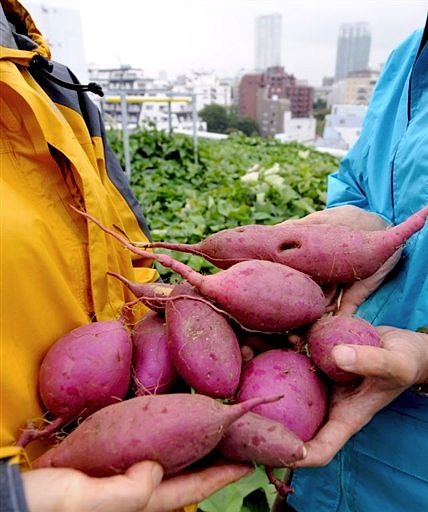
From City Farmer‘s amazing blog, I found this photo and story about NTT Facilities‘ growing sweet potatoes on rooftops in Tokyo. This urban agriculture project makes use of wasted urban space, reduces the heat island effect, and provides local and safe food. Sweet potatoes apparently thrive in harsh sun and strong wind. The Agence France Presse story from November 5, 2008 says that NTT Facilities hopes to take their “Green Potato” project to other Tokyo office buildings and nation-wide to schools.
What prevents other corporations from implementing rooftop agriculture? Is it know-how or cost? There should be some savings by reducing air-conditioning costs (and carbon emissions), and also an opportunity to give office workers opportunities to work together and learn more about how food is grown.



